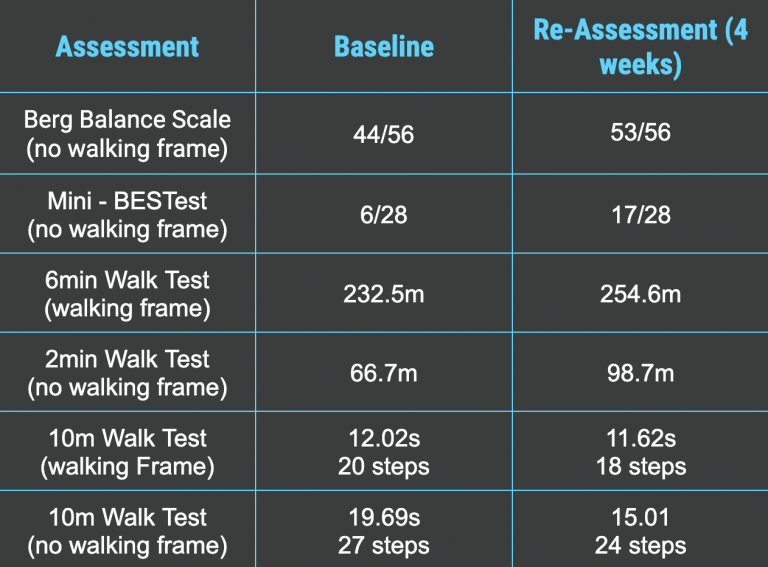Case Study: Guillain-Barré syndrome
HAL therapy can be used to help with a range of neurological and musculoskeletal conditions, including Guillain-Barré Syndrome. In this case study, we’re going to look at how the use of HAL has helped Gabriel increase his independence following his diagnosis of Guillain-Barré Syndrome.
Who is Gabriel?
Gabriel is a 71 year old male who was diagnosed with Guillain Barre Syndrome in October 2018 after returning home early from a trip overseas when he began feeling quite ill. After returning home, Gabriel deteriorated very quickly and was soon admitted to hospital with full paralysis from the neck down.
After spending close to 8 months in hospital, Gabriel was discharged in May 2019 to a rehab hospital to continue his recovery from Guillain Barre Syndrome. Gabriel would spend another 9 months in rehab before officially returning home in February 2020.
What is Guillain Barré Syndrome?
Guillain Barre Syndrome, or GBS, is a very rare autoimmune condition that results in the body’s immune system attacking its nervous system. Because of its rarity, there is still much that is not known about GBS including what causes or triggers it, particularly as it is not contagious or passed on through family genetics though it often tends to present itself following an infection of the body. In some cases, it is theorised that it can be triggered by a virus or bacterial infection within the body that has similar “markings” as our nerve cells. These “markings” essentially mean that the immune system mistakenly targets both the source of infection and it’s own nervous system.
Symptoms of GBS can range from very mild muscle weakness and fatigue, to full paralysis with an inability to breath independently. In most cases however, roughly 70% of sufferers, regardless of severity, will make an almost full physical recovery. 30% of sufferers unfortunately, will experience varying levels of ongoing weakness, fatigue and pain symptoms.
How is it Treated?
While there is no cure, GBS is very treatable with a combination of medical intervention and acute physical rehabilitation.
Gabriel's Program
Gabriel’s program consisted of 15 x 2 hour sessions over the course of four weeks and primarily consisted of high intensity body weight supported treadmill training with the HAL exoskeleton, in combination with an intensive balance program.
The HAL component of treadmill training would take place over the first 45-60 minutes of the session before being removed from the body weight support and exoskeleton system, to focus on pure balance training.
Gabriel's Progress
Gabriel presented on initial assessment with severely limited hand function and a reduced gait capacity. Gabriel relied on his 4 wheel walker to mobilise due to severe balance impairments placing him in a high falls risk category.
After an intensive 4 week block of training with the HAL exoskeleton with a focus on balance training, Gabriel is no longer considered a high falls risk based on data presented within the Berg Balance Scale and is able to mobilise more independently at home without relying as heavily on his walking frame.
Gabriel’s full assessment results can be seen in the table below:

While Gabriel has improved significantly across his balance assessments and several walking assessments as well, he still has a long journey ahead.
The focus will now shift towards improving his overall hand function with a qualified occupational therapist to enhance his independence in daily activities and help him progress to a less restrictive walking aid.
